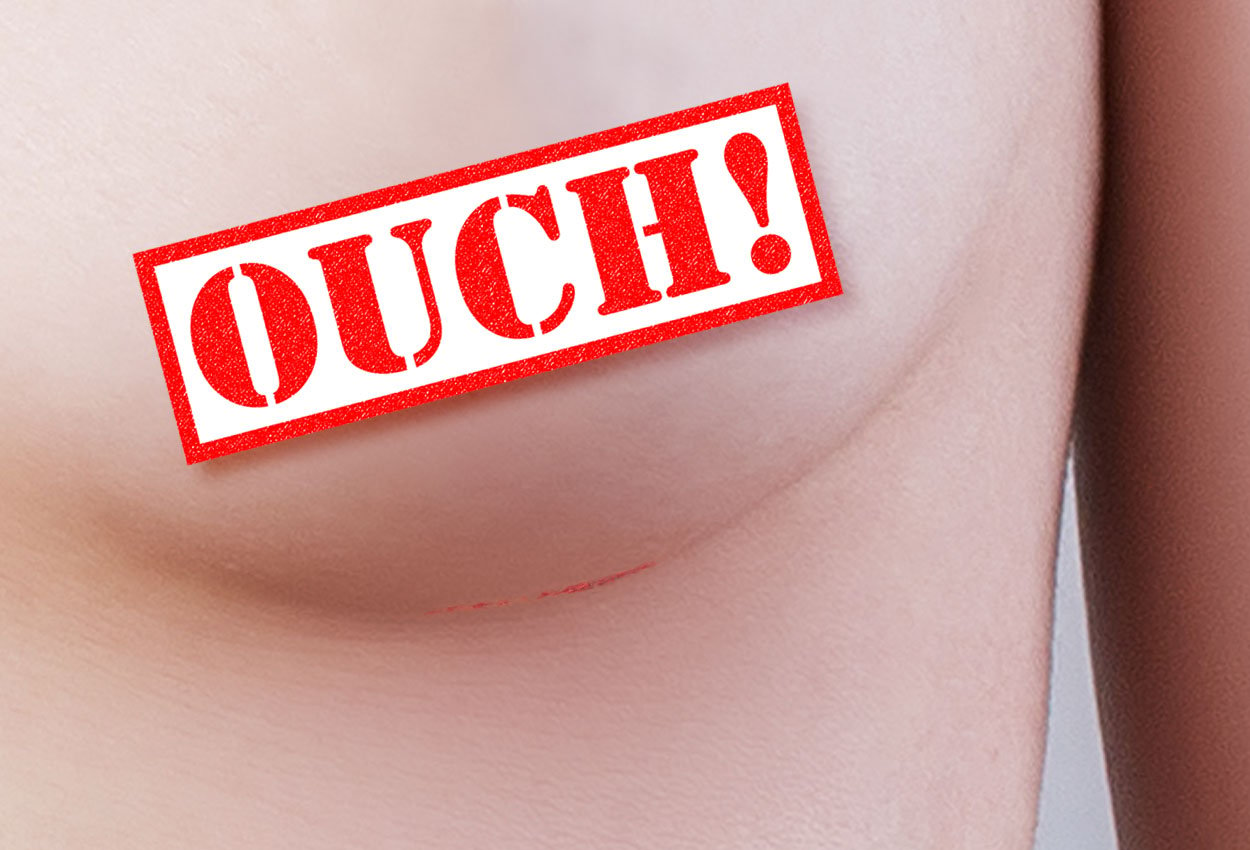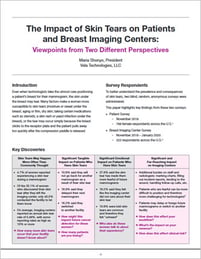
We’ve all been there, your doctor prescribes you a medicine to treat one ailment and the next thing you know, you have another separate issue because of the medication you were given. Often, this side effect or adverse reaction doesn’t make a huge impact and you can continue to take the medicine and feel better.
This can also happen during routine procedures. For example, getting any type of vaccine can often cause pain at the injection site or a fever. This typically doesn’t deter most people from getting that vaccination.
What happens when that adverse reaction isn’t minimal though, and not only does it effect that person for a short period of time, but it also plays a role in whether that person decides to go back for that routine procedure again?
Unfortunately, this is exactly what happens to some women after their yearly mammogram screening.
Skin tear after mammogram – more prevalent than we think?
Skin tearing after a mammogram is considered to be rare event in our industry, so we find it surprising how much organic search traffic we get on our two blog posts addressing the topic. Although published in 2018 and 2019 respectively, these two posts average over 10,000 clicks each year.
Through the search queries, and through other online sources, we know that skin tears can be considered traumatic injuries to those who suffer them.
Chapter 15 in the book Digital Mammography is one of the few resources that specifically address tissue viability and skin tearing in mammography. According to the author of that chapter, skin tears and pressure ulcers can result from the pressure, shear, and friction forces associated with the exam.
Risk of a skin tear is heightened with a patient’s age, gender, medications, medical conditions, diet, weight, and disposition to dry or fragile skin. Sweaty skin that causes the breast to stick to the receptor plate after compression is also a factor. Skin tears can vary from minor to complex wounds.
Far reaching negative impact
The impact that these skin tears have is wide reaching for both the patient and the facility in which their mammogram is performed.
How the facility addresses the incident can lead to patients feeling uncared for and increase the likelihood of their changing imaging centers, or worse, delaying or even foregoing future mammographic screening.
 In fact, a recent survey revealed that over 50% of women who had experienced a skin tear during their mammogram reported feeling uncared for by the imaging facility and increased fear of future mammograms. This created a domino effect resulting in those patients delaying mammograms (18.9%), switching imaging facilities (16%), or forgoing future mammograms completely (10.8%) because of that experience.
In fact, a recent survey revealed that over 50% of women who had experienced a skin tear during their mammogram reported feeling uncared for by the imaging facility and increased fear of future mammograms. This created a domino effect resulting in those patients delaying mammograms (18.9%), switching imaging facilities (16%), or forgoing future mammograms completely (10.8%) because of that experience.
The obvious pitfall of patients not getting their yearly mammogram could potentially result in a late-stage breast cancer diagnosis or even worse dying from breast cancer. One study showed that 50% of women who don’t attend regular screening mammograms died from cancer compared to those who did have regular mammograms.
Incidents of skin tears can negatively affect the imaging facility as well
Usually, a skin tear is found after the mammogram has been completed and not all patients report their skin tear to their healthcare provider. This can lead in an inaccurate report of how many skin tears actually occur and explain why there is a discordance in the breast imaging industry’s average reported number of incidents (0.49%) vs. patients self-reported average of 4.7%.
To complicate matters further for the imaging facility, the patients who did report their skin tear to the imaging facility report being told that it is a normal “side effect” and that it was nothing to worry about.
Even though that may be true in most cases, the physical pain that patient feels coupled with the perception of the facility as uncaring can lead to the patient being unsatisfied and maybe not returning to that location for future mammograms.
This effects the imaging facility in the long run. When patients are satisfied with their care, they are more likely to return for future services. When patients aren’t satisfied they tend not to return. Bad reviews affect the imaging facility’s reputation, market share, and profitability.
Closing the gap in perception of care
Staff want their patients to feel well cared for, to trust their facility, and return. There are multiple ways to satisfy patient needs and improve their perception of care throughout their breast imaging experience.
- Be friendly and show concern
- Ensure the patient’s privacy
- Inform patient of any delays
- Give instruction on what to expect
- Address any pain or discomfort
Another way to help improve patient perception of care is to use a receptor plate cover such as Bella Blanket® protective coverlets.
 Bella Blankets help reduce the likelihood of skin tears by providing a sanitary barrier between the patient’s breast and the mammography equipment that prevents the breast from sticking to the plate after compression.
Bella Blankets help reduce the likelihood of skin tears by providing a sanitary barrier between the patient’s breast and the mammography equipment that prevents the breast from sticking to the plate after compression.
The smooth fabric-like texture of the Bella Blankets coverlet allows the technologist to move her hands easily under the breast during positioning and helps hold the breast in place during compression to help further reduce the likelihood of tearing from shear and friction forces during the exam.
If you are interested in reducing the likelihood of skin tears for your patients contact your Beekley Medical Account Manager today at 1.800.233.5539 or email info@beekley.com to ask about a trial evaluation for your imaging center.
Related articles:

Megan Sargalski
Marketing Communications Specialist
